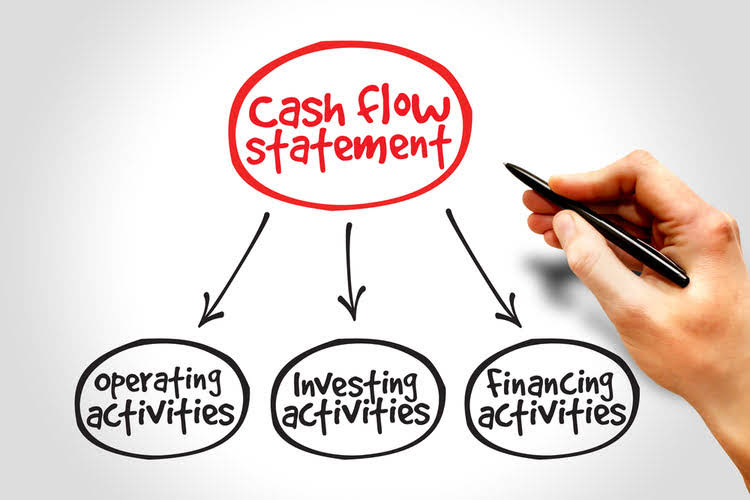
If a company is able to keep a short operating cycle, its cash flow will consistent and the company won’t have problems paying current liabilities. Days Sales Outstanding (DSO) measures the average number of days it takes for your company to collect payments from customers after making a sale. A lower DSO indicates that you are collecting payments promptly, which positively impacts cash flow and liquidity.

Importance of understanding the operating and cash cycles 🔗
- Consider alternative financing sources, such as invoice-based financing from Fundbox.
- This cycle is a crucial measure of a company’s financial efficiency and liquidity.
- Effective its management contributes to the overall viability and sustainability of a business.
- Upgrade to one of our premium templates when needed and take your work to the next level.
- Get instant access to video lessons taught by experienced investment bankers.
Continuous improvement strategies to enhance the overall efficiency of the operating cycle. GAAP requires that assets and liabilities must be broken out into current and non-current categories on a balance sheet. This allows the financial statement user to see what assets will be used and what liabilities will come due in the current year or current operating cycle.
- The operating cycle is relatively straightforward to calculate, but more insights can be derived from examining the drivers behind DIO and DSO.
- Say goodbye to the hassle of building a financial model from scratch and get started right away with one of our premium templates.
- A well-managed operating cycle ensures that resources, especially cash, are efficiently utilized and not tied up unnecessarily.
- In some cases, businesses may struggle with the lack of integration between different departments, such as sales, finance, and operations.
- To properly manage its working capital, a business must properly manage its accounts receivable, accounts payable, inventories and cash resources.
Operating Cycle Calculation Example

In simple terms, it measures the specific time it took for the company to purchase the inventory, sell the finished goods, and collect cash from the customer who paid on credit. The ‘inventory period’ measures how many days on average the inventory remains in the system before it’s sold. The ‘accounts receivable period’ is What is bookkeeping the average number of days it takes for a firm to collect cash from its customers after a sale has been made. Likewise, if the business offers its customers a high credit limit or long credit times, then the accounts receivable of the business will be very high and it will take a longer time to recover. All of these factors can affect the receivable days of the business and, therefore, the cash operating cycle of the business will be longer.
Financial Consolidation & Reporting

If you look at the larger picture, you’ll find that the operating cycle provides an idea about the cost of a company’s operations and how quickly it can repay its debt. On the contrary, a long operating cycle creates a negative impact on the cash flow of a business. The longer the operating cycle the greater the level of resources ‘tied up’ in working capital. Operating cycle of working capital refers to the total number of working days that a business takes to buy inventory, sell it off, and then collect the proceedings from the sale. However, CCC does not apply to companies that don’t need inventory management.

Joseph owns a fast food store and he wants to check how efficiently his business is running. Note that the cycle would start when Joseph starts paying for the raw materials he uses for making food items for his customers. In this case, the operating cycle of the business would not end until all the items have been sold and Joseph receives cash for all of them. Finally, if the business wants to reduce its cash operating cycle, it must negotiate better repayment virtual accountant terms with its suppliers that allows the business more flexibility in making payments. The higher the accounts payable period of a business is, the better it is for the cash operating cycle.
What is the relationship between operating cycle and working capital management?
These external factors can impact the availability of raw materials and components, affecting the overall efficiency of the operating cycle. Offering credit to customers introduces the risk of late payments or non-payment, contributing to bad debt. Managing credit risk effectively requires a balance between attracting customers and mitigating the potential financial impact of uncollectible receivables. A well-managed operating cycle ensures that resources, especially cash, are efficiently utilized and not tied up unnecessarily. Enhanced liquidity allows companies to meet short-term obligations, seize investment opportunities, and navigate financial challenges.
For instance, software companies that offer computer programs through licensing can realize sales without the need to manage stock. Similarly, insurance or brokerage companies don’t buy items wholesale for retail, so CCC doesn’t apply to them. Revenue for FY 2017 is $52,056 million and cost of revenue is $42,478 operating cycle million respectively.
Looking to streamline your business financial modeling process with a prebuilt customizable template? Say goodbye to the hassle of building a financial model from scratch and get started right away with one of our premium templates. For the past 52 years, Harold Averkamp (CPA, MBA) hasworked as an accounting supervisor, manager, consultant, university instructor, and innovator in teaching accounting online. For the past 52 years, Harold Averkamp (CPA, MBA) has worked as an accounting supervisor, manager, consultant, university instructor, and innovator in teaching accounting online. HighRadius provides a powerful, cloud-based Order to Cash solution designed to automate and streamline your financial operations.
Customer Relationship Management
The Net operating cycle, also known as the cash conversion cycle, takes into account both the time required to convert assets into cash and the time taken to pay suppliers. It combines the time for inventory turnover and receivables collection minus the payables period. For example, the days sales outstanding value could be higher simply because the process to collect the credit purchases is inefficient and needs to be worked on.
